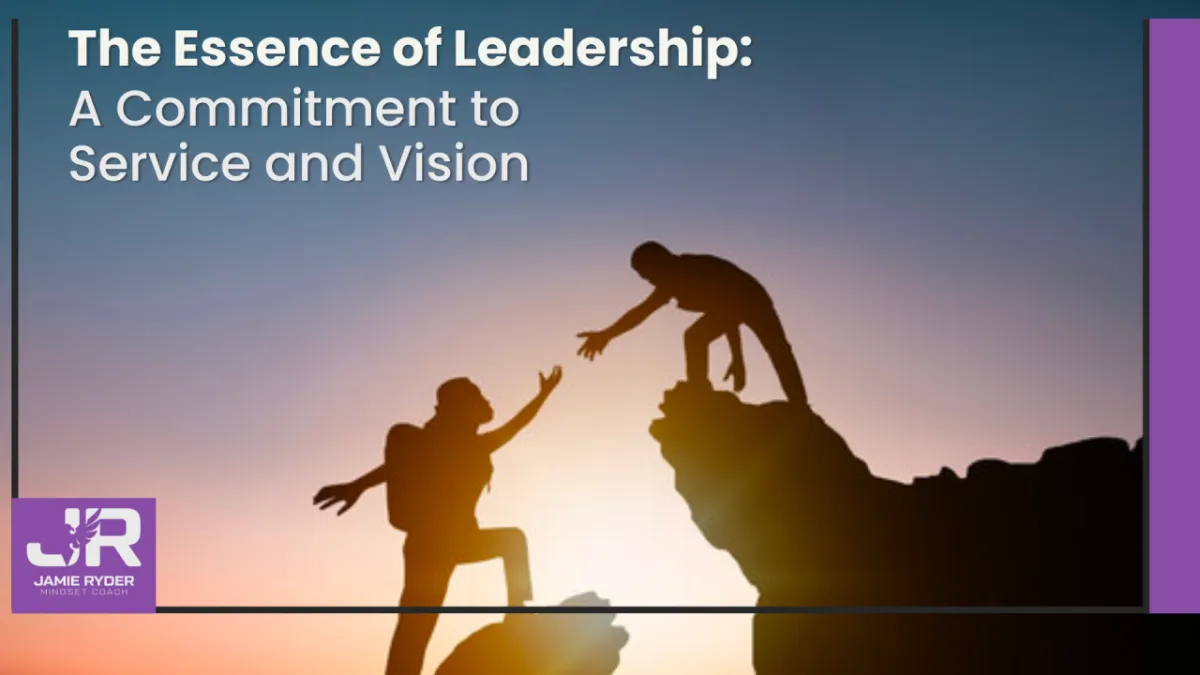
The Essence of Leadership: A Commitment to Service and Vision
n the dynamic landscape of business, politics, and life, leadership stands as a beacon guiding teams and organisations toward success. The measure of a good leader is not found in the titles they hold or the authority they wield, but in the passionate and enthusiastic following they inspire. True leadership transcends hierarchy; it is a commitment to service, a devotion to a shared vision, and a recognition that people are not possessions but invaluable assets. In this blog, we explore the essence of leadership, emphasising the qualities that define effective leaders: a commitment to service, valuing people, leading with optimism, empowering teams and maintaining a big-picture orientation.
Leadership as a Commitment to Service: At its core, leadership is a role of service. Leaders are not meant to rule with an iron fist but to serve their teams and organisations in pursuit of a greater purpose. A servant-leader mindset fosters collaboration, trust, and a sense of community. When leaders prioritise the well-being and growth of their team members, they create an environment where individuals feel safe, supported, accomplished, valued, free, accomplished and aligned to purpose. It is this holistic approach that fosters motivation, empowering teams to contribute their best.
Valuing People as Key Assets, Not Possessions: A hallmark of effective leadership is the recognition that people are the heart of any organisation. Good leaders understand that their team members are not mere cogs in a machine but unique individuals with diverse skills, talents, and perspectives. By valuing people as key assets, leaders empower their teams to unleash their full potential. This approach fosters a culture of respect, inclusivity, and mutual support, laying the foundation for innovation and success.
Leading with Optimism: Leadership is not immune to challenges and setbacks. However, a positive and optimistic leader can turn adversity into opportunities for growth. Optimism is contagious, and leaders who approach challenges with a can-do attitude inspire resilience and creativity in their teams. By maintaining a hopeful outlook, leaders create a culture where obstacles are viewed as stepping stones to success rather than insurmountable barriers.
Empowering Team Members: Crucial to leadership is fostering a culture where team members make decisions without the fear of failure. Leaders should encourage calculated risks, creating a team adept at informed decision-making. Even occasional failures can turn a team into a powerhouse of innovation, viewed as stepping stones to success. Leaders instilling confidence to experiment and learn from mistakes pave the way for continuous improvement. Embracing failure as part of the learning process nurtures resilience, unlocking the full potential of teams, ensuring they are dynamic, adaptable, and ready for the challenges of an ever-evolving landscape.
Big-Picture Orientation: Effective leaders possess the ability to see beyond the day-to-day tasks and challenges, focusing on the bigger picture. A big-picture orientation involves understanding the long-term goals and vision of the organisation and aligning daily efforts with these overarching objectives. Leaders who can communicate this vision inspire a sense of purpose and direction among their team members, fostering a collective drive toward shared goals.
In conclusion, the essence of leadership lies in a commitment to service, valuing people as indispensable assets, leading with optimism, empowering teams and maintaining a big-picture orientation. True leaders inspire others not through the authority they wield but through the example they set and the vision they articulate. As we navigate the complex and ever-changing landscape of the modern world, let us strive to embody these qualities of leadership, creating environments where individuals flourish, teams thrive, and visions become reality.

